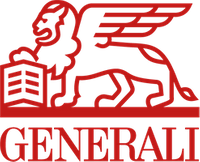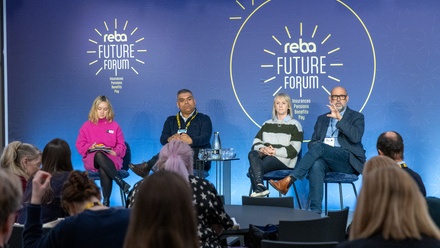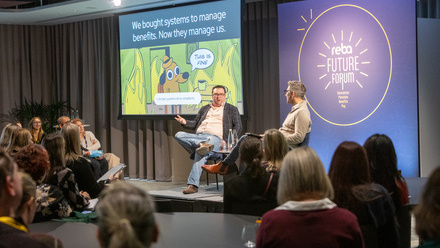Key global trends in reward and recognition

But in their search for the latest ideas and approaches, employers could be overlooking one of the most easily executed strategies: employee recognition.
As the saying goes, people leave managers not companies. It’s not uncommon for employees to feel that their best efforts are being routinely ignored. This element of engagement and performance might be one of the greatest missed opportunities for managers and leaders.
Workplace recognition motivates, provides a sense of accomplishment and makes employees feel valued for their work. Recognition not only boosts individual employee engagement, but it has also been found to increase productivity and loyalty to the company, leading to higher retention.
The majority of respondents to the managing for employee retention (2018) study agreed recognition can help create a positive workplace culture and employee experience, and over half said their programme positively affects retention (68 per cent) and recruitment (56 per cent).
The art of recognition also sends messages to other employees about what success looks like. In this way, it’s both a tool for personal reward and an opportunity to reinforce the desired culture of the organisation to other employees.
Reward vs recognition
Although reward and recognition are intertwined they are also very different. Put simply, rewards are tangible, recognition is intangible.
Rewards are always something you can touch and of a specific amount. In addition to pay, these can include everything in an employee’s benefits package – from pension and income protection to health and wellbeing.
Recognition, on the other hand, is often invisible in nature yet priceless in value: for example, praise from your boss or peers on a job well done.
Luke Prankard, Account Manager at total wellbeing provider LifeWorks, one of Generali UK’s Wellbeing Investment Matching Partners, comments: “A person's total wellbeing is made up of four pillars – mental, physical, social and financial – which are all heavily interlinked. Recognition is a key part of that social aspect and, increasingly, recognition is being linked to core company values so that it starts to create a sense of community and a culture of appreciation.
“In effect, this is akin to the kind of office hub environment that workers were used to in the past, where experiences, success and failures were shared. Workplaces can be so disparate these days – especially for global companies – and everyone is so busy, that this kind of supportive environment has become lost.”
Prankard explains that it’s now possible to track recognition against core company values in a way that helps identify where there might be disconnects.
According to the Society for Human Resource Management, employee recognition programmes were more successful when they were aligned with organisational values and strategy. Financial investment is also important, but it had a more positive impact on employee recognition programme ratings when core to the organisation’s strategy, showing the importance of culture.
So what does recognition look like these days? And for what reasons is it being used?
Trends in global recognition
World at Work’s trends in employee recognition (2017) research revealed that the top five recognition programmes have ranked the same since 2013: length of service (85 per cent), above and beyond performance (77 per cent), programmes to motivate behaviours associated with the business’ initiatives (eg customer service, collaboration (51 per cent )), peer to peer recognition (49 per cent ) and retirement (34 per cent).
Nearly three-quarters (72 per cent) of organisations have a budget for recognition programmes and these budgets are typically a mixture of centralised for the entire organisation and held in each department. Of the payroll budget used for recognition programmes, 51 per cent allocate between 0.1 per cent to 0.3 per cent for activities, followed by 18 per cent allotting 0.4 per cent to 0.6 per cent.
Most often recognition awards are presented one-on-one with a manager. However, email and intranet sites are widely used to communicate programme activities. Certificates, cash awards and gift vouchers for product purchases are also popular.
More than half of organisational senior management members view employee recognition programmes as an investment, and only 11 per cent view them as an expense, found World at Work.
Meanwhile, a slight shift is occurring in the organisations that feature their recognition programmes as a key employee benefit to attract new employees, with a four percentage point increase to 16 per cent, and 42 per cent of organisations sometimes, but not always, marketing this benefit.
Trends in global reward
Of course, reward is still a key aspect in recruitment: the headline if you like. So what’s happening there?
Growth in real wages remains low or even negative in most economies around the world, according to the Global Payroll Association’s (GPA) Trends 2018: what’s new in pay and rewards? (2018) report. This is despite the fact that global economic activity has slowly improved over the last 12 to 18 months.
GPA reports that key compensation trends include: aligning reward strategies with business strategy, introducing key performance indicators to evidence how your reward strategy has contributed to boosting business performance; the emergence of new reward approaches such as crowd-sourced pay, pay to quit policies, pay for talent and team awards; an increasing focus on pay equity and transparency as workforces become more diverse; and a growing use of analytics tools to help employers analyse their people data more effectively, with a view to providing leaders with the necessary insights to inform business outcomes.
Integrated approach
Considering all of the above, there seems clear merit for global recruitment and retention in having an integrated reward and recognition strategy, one that is clearly aligned with core company values.
“We carried out a study of employees last year which revealed that, of the 38.4 per cent of respondents who don’t feel valued by their employer, 75.5 per cent are looking for greener pastures already,” says Prankard. “In the same study, the top areas employees said employers needed to focus on improving were employee satisfaction (23 per cent) and employee recognition (23 per cent).”
The author is Tracey Ward, head of business development and marketing, Generali UK Employee Benefits.
This article was provided by Generali UK Employee Benefits.
Supplied by REBA Associate Member, Generali UK Branch
Generali UK provides insurance solutions to the UK employees of multinational clients.







